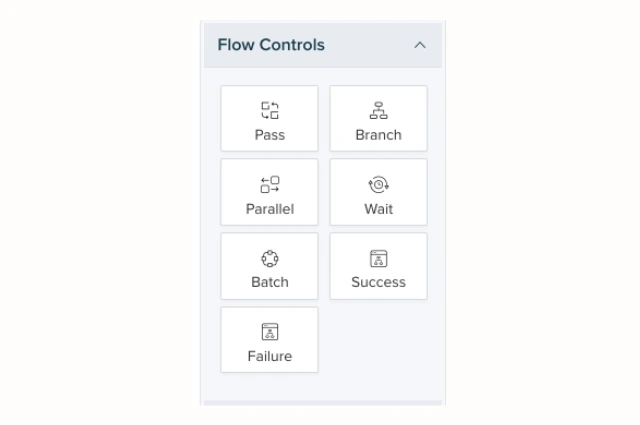
What is Zoho Circuit and Its Key Functionalities?
Zoho Circuit is a platform designed to help organisations automate workflows and integrate microservices without requiring complex coding knowledge. This tool stands out for its user-friendly design and robust features, making it accessible to both technical and non-technical users.
This blog will help you explore through the fundamentals of Zoho Circuit, its key functionalities, and its benefits, all in simple terms.
What is Zoho Circuit?
Zoho Circuit is a cloud-based platform that enables businesses to integrate microservices and create automated workflows. By functioning as a state machine, it manages the sequence of steps in a process, where the output of one step seamlessly serves as the input for the next. This ensures that workflows are not only automated but also adaptable, capable of handling retries, waits, or decision-making in case of errors.
The platform’s flexibility makes it ideal for creating smart workflows requiring little to no coding. Whether you are a developer or a business user, Zoho Circuit provides the tools to simplify complex processes.
Key Features of Zoho Circuit
1. No-Code Customization
Zoho Circuit empowers users to build workflows without writing a single line of code. It allows seamless integration of microservices and applications developed on various platforms. This democratizes the ability to automate processes, enabling even non-technical users to create sophisticated workflows.
2. Drag-and-Drop Functionality
The platform offers an intuitive drag-and-drop interface, making it easy to create workflows. Controls such as branching, parallel processing, and batching are available to simplify the creation of complex workflows. Functional tools like API webhooks, custom functions, and nested circuits further enhance its capabilities.
3. Code and No-Code Flexibility
For users who prefer coding, Zoho Circuit offers a Code View that supports simple JSON construction. Additionally, it provides a built-in environment for creating custom functions using programming languages like Deluge, Go, Java, Node.js, and Python.
Also Read: Introduction to Zoho Deluge
4. Error Handling
Zoho Circuit helps you create smart workflows that are resilient to errors. Features like retry, wait and success-failure handling ensure workflows are robust and reliable. This minimizes interruptions and enhances process efficiency.
Benefits of Using Zoho Circuit
1. Automation Made Simple
Manual tasks can be converted into automated workflows, saving time and reducing the need for human intervention. Workflows in Zoho Circuit are designed to operate independently, ensuring smooth execution from start to finish.
2. Scalability
Zoho Circuit is built on the cloud, making it highly scalable. Whether you’re handling a few requests or thousands, the platform dynamically allocates resources to ensure uninterrupted performance.
3. Rapid Updates
Updating your workflows is quick and straightforward. By organizing your application’s logic into modular workflows, you can make changes without reworking the entire system. Swap out components, reorganize workflows, and deploy updates in minutes.
Understanding States in Zoho Circuit
At the core of Zoho Circuit are states, which define each step of a workflow. States can either control the flow of the circuit or execute specific tasks.
Types of States:
1. Flow Controls:
Manage the direction of the workflow.
- Pass: Transfers data from one state to another.
- Branch: Allows decision-making based on input.
- Parallel: Executes multiple tasks simultaneously.
- Wait: Introduces a delay.
- Batch: Handles grouped executions.
- Success/Failure: Terminates the workflow with a specific outcome.

2. Success/Failure:
Terminates the workflow with a specific outcome.Functional States: Perform tasks like running custom functions, triggering webhooks, or integrating additional circuits.
States of Function. States are made up of characteristics. Unique characteristics are used to define some states. An example of a circuit with the ‘Pass’ and ‘Wait’ states in Code View is shown below.

How Zoho Circuit Works?
To build workflows in Zoho Circuit, you need to create and define a circuit. Circuits represent the entire workflow and function as state machines, automating every step from start to finish.
Steps to Set Up a Circuit:
Create a Circuit:
- Log in to the Zoho Circuit console.
- Navigate to the “Circuits” section and select +New Circuit.
- Provide a unique name and description for your circuit, then click Create.
Define the Circuit:
- Use the Builder View to design workflows with drag-and-drop controls.
- Alternatively, switch to Code View for JSON-based definitions.
Test the Circuit:
- Test your workflow to ensure it functions as intended.
- Refine and iterate as necessary to optimize performance.
Supported Environments for Custom Functions
Zoho Circuit supports custom function development through its built-in Function as a Service (FaaS) environment.
Developers can use popular programming languages such as:
- Deluge
- Go
- Java
- Node.js
- Python
This flexibility allows businesses to leverage existing expertise and tools to create tailored solutions.
Common Fields in the Zoho Circuit States
Each state in Zoho Circuit is defined by several fields:
1. Name: A unique identifier for the state.
2. Type: Specifies the functionality of the state (e.g., Pass, Wait, Function).
3. Next: ‘Next’ is used to indicate the name of the state that must be executed once the current state is finished. Every other state, except the terminal states “Success” and “Failure,” needs this field. ‘End’ must be the value of a circuit’s ‘Next’ field in its final state.
4. Start: ‘start: true’ is a field value that must be present in every circuit. The ‘ start’ and ‘next’ fields determine the order of execution, even though states can be declared in any order. The ‘ start’ field must therefore be supplied for the initial state. However, this field value can only exist in one state inside a circuit.
States additionally share other fields, like Input Path, Output Path, and Result Path for managing input and output, in addition to the common fields.
Note: All fields are case-sensitive, as are their values. The precise value must be entered into the circuit after it has been defined.
These fields, along with additional attributes like Input Path, Output Path, and Result Path, ensure precise control over workflow execution.
Why Choose Zoho Circuit?
Zoho Circuit is more than just a workflow automation tool; it’s a platform designed for adaptability and ease of use. Whether you’re managing routine processes or building complex applications, Zoho Circuit’s powerful features and cloud-based architecture make it an excellent choice for businesses of all sizes.
By automating repetitive tasks, enhancing scalability, and providing quick updates, Zoho Circuit allows organizations to focus on innovation and growth instead of mundane operational challenges.
Get a Professional Help with CRM Masters
Zoho Circuit’s ability to create workflows without coding, coupled with powerful features for developers, ensures it caters to a diverse range of users.
If you’re looking to simplify your operations, automate processes, or integrate microservices seamlessly, Zoho Circuit could be the perfect solution. Explore the platform with CRM Masters to see how it can transform your workflows and elevate your business to new heights.
We are Certified Zoho Partner transforming business processes since 2016. With team of highly skilled and professional developers, we are providing zoho integrating and implementation services globally mainly in USA, UK, and India.
Contact CRM Masters now and book your FREE consultation.












